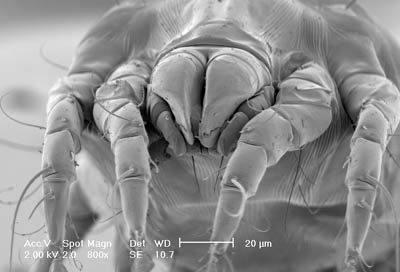
A 2-year, EPSRC-funded project
The Environmental Control of House Dust Mites: Validation of a Combined Hygrothermal Population Model
Starting date: 1st of April 2004
PUBLICATIONS
| Home |
|---|
| Publications |
| Research Team |
| International Mite Network |
| Researchers' Page |
| Contact Us |
Completed EPSRC-funded project “Environmental Control of House Dust Mites: Validation of a Combined Hygrothermal Population Model” (April 2004 to April 2006) |
|
Published Papers
|
|
News |
|
EPSRC Dust Mite Research Team on the Dispatches TV programme on asthma in childhood |
|
Completed
EPSRC-funded project "Hygrothermal Model for Predicting House
Dust Mite Response to Environmental Conditions in Dwellings“ (April
2000 to June 2002)
|
|
Published Papers |
|
| A combined transient hygrothermal and population model of house dust mites in beds | |
| Controlling house dust mites through ventilation: the development of a model of mite response to varying hygrothermal conditions | |
| Factors affecting the carrying capacity (K) of a mattress for the house dust mite Dermatophagoides pteronyssinus | |
Reports and Workshops |
|
| Four Page Summary of Project Findings | |
| Literature Review | |
| PowerPoint presentation from Project Workshop 18 July 2002 | |
| Dust Mite Newsletter Sept 2000 | |


